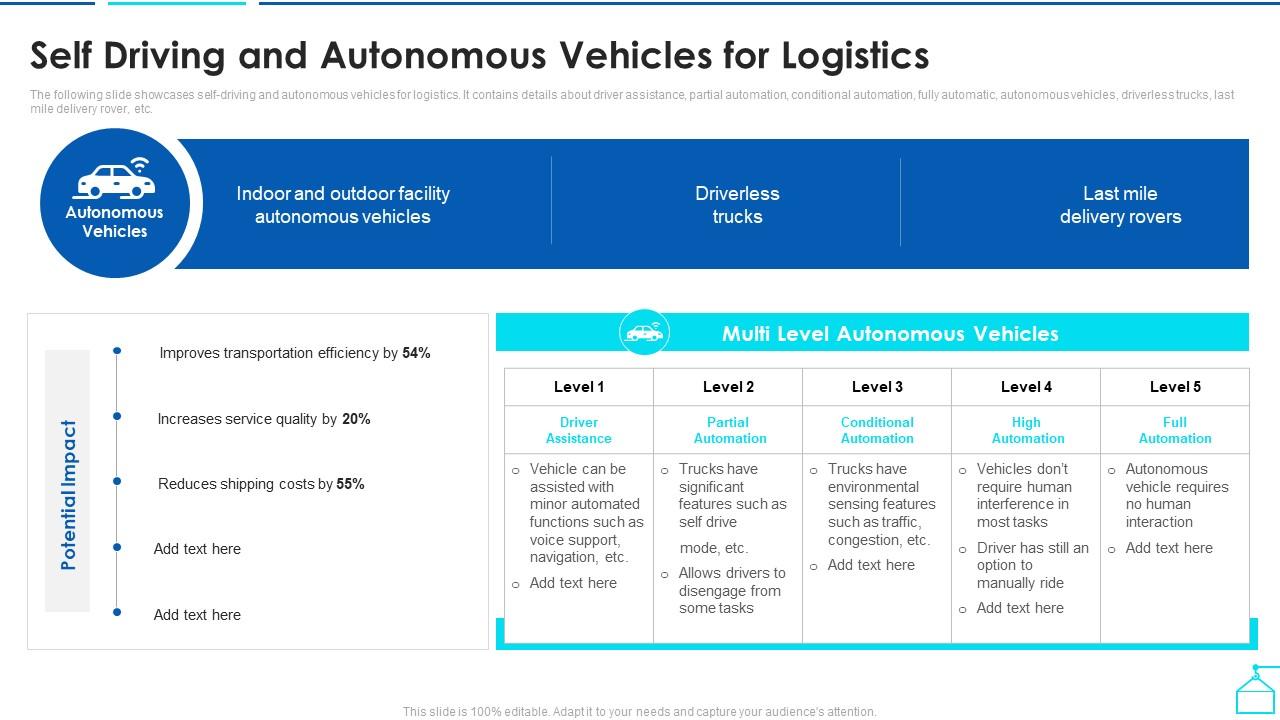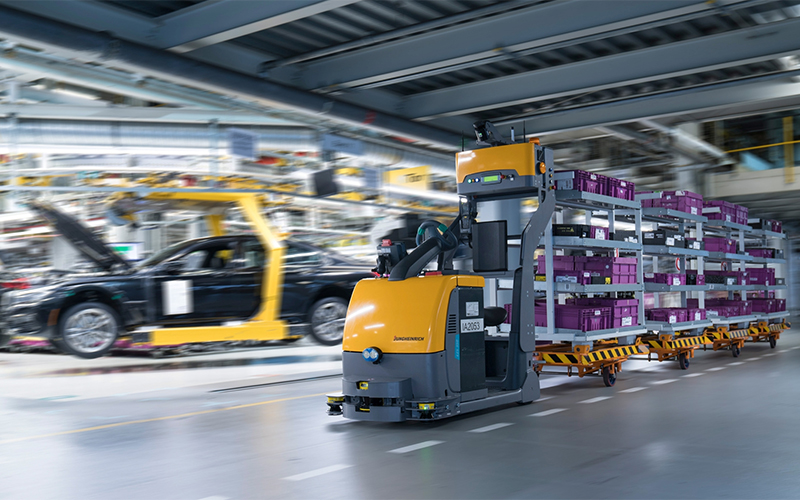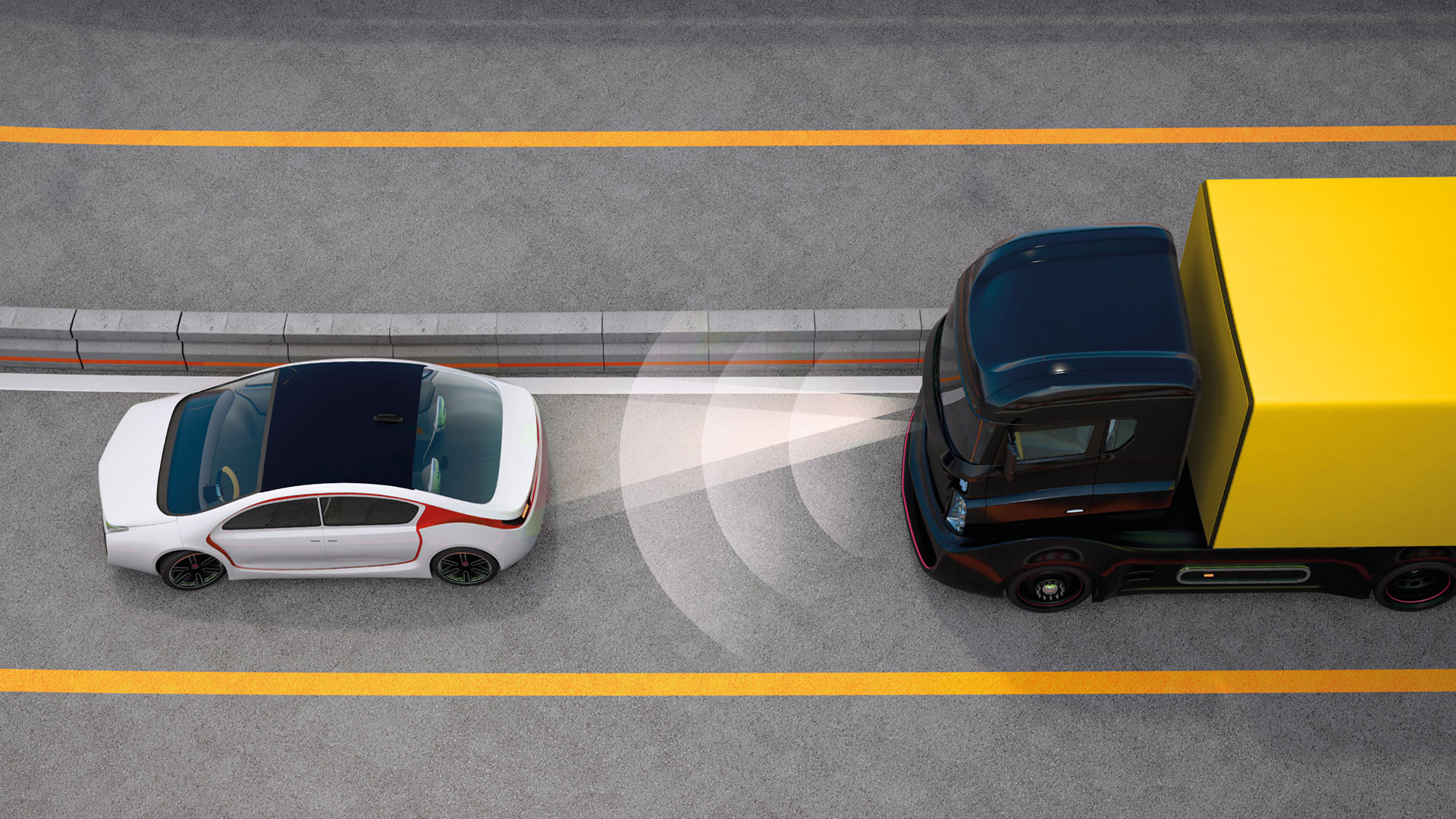Streamlining Logistics Operations with Autonomous Vehicles
The integration of autonomous vehicles in logistics has the potential to revolutionize the industry by increasing efficiency, reducing labor costs, and improving safety. Autonomous vehicles for logistics can operate around the clock without the need for rest, reducing transit times and increasing the speed of delivery. This technology can also optimize routes in real-time, reducing fuel consumption and lowering emissions.
The use of autonomous vehicles in logistics can also improve safety by reducing the risk of accidents caused by human error. Autonomous vehicles are equipped with advanced sensors and cameras that enable them to detect and respond to their surroundings, reducing the risk of collisions and improving overall safety. Furthermore, autonomous vehicles can reduce labor costs by minimizing the need for human drivers, allowing logistics companies to allocate resources more efficiently.
As the logistics industry continues to evolve, the integration of autonomous vehicles is expected to play a major role in shaping its future. With the potential to increase efficiency, reduce costs, and improve safety, autonomous vehicles for logistics are poised to transform the industry. Logistics companies that adopt autonomous vehicle technology can expect to see significant improvements in their operations, from increased productivity to enhanced customer satisfaction.
The benefits of autonomous vehicles in logistics are clear, but it’s essential to consider the challenges associated with their implementation. Logistics companies must assess their infrastructure readiness, select the right technology partners, and train personnel to ensure a smooth transition to autonomous vehicle technology. By doing so, they can unlock the full potential of autonomous vehicles and revolutionize their logistics operations.
How to Implement Autonomous Vehicle Technology in Your Logistics Network
Implementing autonomous vehicle technology in logistics operations requires careful planning and execution. The first step is to assess infrastructure readiness, including the condition of roads, bridges, and other critical infrastructure. This assessment will help determine the feasibility of autonomous vehicle deployment and identify potential challenges.
Next, logistics companies must select the right technology partners to provide the necessary hardware and software solutions. This includes choosing a reliable autonomous vehicle manufacturer, as well as a provider of advanced sensors, cameras, and other critical components. It’s essential to evaluate potential partners based on their experience, expertise, and ability to integrate with existing systems.
Training personnel is also crucial to ensure a smooth transition to autonomous vehicle technology. Logistics companies must provide comprehensive training programs for drivers, maintenance personnel, and other stakeholders to ensure they understand the capabilities and limitations of autonomous vehicles. This training should include hands-on experience with autonomous vehicles, as well as classroom instruction on safety procedures and emergency protocols.
In addition to these steps, logistics companies must also consider the need for data analytics and management systems to support autonomous vehicle operations. This includes investing in advanced data analytics tools to monitor and optimize autonomous vehicle performance, as well as implementing robust cybersecurity measures to protect against potential threats.
By following these steps, logistics companies can successfully implement autonomous vehicle technology and reap the benefits of increased efficiency, reduced labor costs, and improved safety. Autonomous vehicles for logistics have the potential to transform the industry, and companies that adopt this technology early will be well-positioned to thrive in a rapidly changing market.
It’s also important to note that implementing autonomous vehicle technology is not a one-time event, but rather a continuous process. Logistics companies must be prepared to adapt to changing regulations, advances in technology, and shifting market conditions. By staying ahead of the curve and investing in ongoing training and development, logistics companies can ensure that their autonomous vehicle operations remain safe, efficient, and effective.
Real-World Applications of Autonomous Vehicles in Logistics
Several companies have already successfully implemented autonomous vehicle technology in their logistics operations, demonstrating the potential of this technology to transform the industry. One notable example is Waymo, a leading developer of autonomous driving technology, which has launched a self-driving truck program to improve the efficiency and safety of its logistics operations.
Another company that has made significant strides in autonomous logistics is Nuro, a robotics company that has developed a fleet of autonomous delivery vehicles. Nuro’s vehicles are designed to navigate through crowded city streets and deliver packages to customers quickly and efficiently. The company has already partnered with several major retailers, including Kroger and Walmart, to deploy its autonomous delivery vehicles in various cities across the United States.
Other companies, such as DHL and UPS, are also exploring the use of autonomous vehicles in their logistics operations. DHL, for example, has launched a pilot program to test the use of autonomous trucks in its supply chain, while UPS has partnered with a leading autonomous vehicle developer to explore the potential of autonomous delivery vehicles.
These real-world applications of autonomous vehicles in logistics demonstrate the potential of this technology to improve the efficiency, safety, and sustainability of logistics operations. As the technology continues to evolve and improve, we can expect to see even more innovative applications of autonomous vehicles in the logistics industry.
Autonomous vehicles for logistics have the potential to transform the industry in many ways, from improving the efficiency of delivery routes to reducing the risk of accidents. By leveraging the power of autonomous vehicle technology, logistics companies can create a more sustainable, efficient, and safe supply chain that benefits both their customers and the environment.
The use of autonomous vehicles in logistics also has the potential to create new business models and revenue streams. For example, companies could offer autonomous delivery services to customers, or use autonomous vehicles to transport goods between warehouses and distribution centers. The possibilities are endless, and the future of autonomous logistics is exciting and full of potential.
Overcoming Regulatory and Infrastructure Challenges
As the logistics industry continues to adopt autonomous vehicles for logistics, regulatory and infrastructure challenges must be addressed to ensure a seamless transition. The lack of standardized frameworks and dedicated infrastructure can hinder the widespread adoption of autonomous vehicles, making it essential to develop and implement comprehensive regulations and infrastructure solutions.
Regulatory frameworks governing autonomous vehicles for logistics are still in their infancy, with different countries and regions having varying laws and guidelines. This lack of standardization can create confusion and uncertainty for logistics companies looking to integrate autonomous vehicles into their operations. To overcome this challenge, governments and regulatory bodies must work together to establish clear and consistent guidelines for the development, testing, and deployment of autonomous vehicles.
Infrastructure challenges are another significant hurdle to overcome. Autonomous vehicles require dedicated lanes, communication systems, and sensor technologies to operate safely and efficiently. The installation of these infrastructure components can be costly and time-consuming, requiring significant investment from logistics companies and governments. However, the long-term benefits of autonomous vehicles, including increased efficiency and reduced labor costs, make the investment worthwhile.
One potential solution to infrastructure challenges is the development of autonomous vehicle-specific lanes or corridors. These dedicated lanes can be designed with the specific needs of autonomous vehicles in mind, including the installation of communication systems and sensor technologies. This approach can help to reduce the complexity and cost of integrating autonomous vehicles into existing logistics operations.
Another approach is to leverage existing infrastructure, such as highways and intermodal facilities, to support the operation of autonomous vehicles. This can involve the installation of autonomous vehicle-specific technologies, such as sensors and communication systems, to enable safe and efficient operation.
Logistics companies can also play a crucial role in addressing regulatory and infrastructure challenges by working closely with governments and regulatory bodies to develop and implement comprehensive regulations and infrastructure solutions. By collaborating with industry stakeholders, logistics companies can help to drive the development of standardized frameworks and dedicated infrastructure, paving the way for the widespread adoption of autonomous vehicles for logistics.
Ultimately, overcoming regulatory and infrastructure challenges is critical to realizing the full potential of autonomous vehicles for logistics. By developing and implementing comprehensive regulations and infrastructure solutions, logistics companies can unlock the benefits of autonomous vehicles, including increased efficiency, reduced labor costs, and improved safety.
The Future of Autonomous Vehicles in Logistics: Trends and Predictions
The logistics industry is on the cusp of a revolution, driven by the increasing adoption of autonomous vehicles for logistics. As technology continues to advance and improve, the potential for autonomous vehicles to transform the industry is vast. In this article, we will explore the emerging trends and predictions for the future of autonomous vehicles in logistics.
One of the most significant trends in autonomous vehicles for logistics is the increasing focus on electrification. As concerns about climate change and sustainability continue to grow, logistics companies are looking for ways to reduce their environmental impact. Electric autonomous vehicles offer a promising solution, with the potential to significantly reduce emissions and operating costs.
Another trend is the development of autonomous vehicles for specific logistics applications, such as last-mile delivery and warehouse automation. Companies like Nuro and Waymo are already testing autonomous vehicles for these applications, with promising results. As the technology continues to improve, we can expect to see more widespread adoption of autonomous vehicles for these specific use cases.
Predictions for the future of autonomous vehicles in logistics are also focused on the potential for increased adoption and advancements in technology. According to a report by McKinsey, the global market for autonomous vehicles in logistics is expected to reach $128 billion by 2025. This growth will be driven by the increasing demand for efficient and cost-effective logistics solutions, as well as the ongoing advancements in autonomous vehicle technology.
New business models are also emerging, driven by the increasing adoption of autonomous vehicles for logistics. For example, companies like Uber Freight and Convoy are using autonomous vehicles to offer on-demand logistics services, which can help to reduce costs and increase efficiency for shippers. As the technology continues to improve, we can expect to see more innovative business models emerge.
Advancements in technology are also expected to play a significant role in the future of autonomous vehicles for logistics. For example, the development of 5G networks and edge computing will enable faster and more reliable data transmission, which is critical for the safe and efficient operation of autonomous vehicles. Additionally, the increasing use of artificial intelligence and machine learning will enable autonomous vehicles to make more informed decisions and improve their overall performance.
Overall, the future of autonomous vehicles in logistics is exciting and full of potential. As technology continues to advance and improve, we can expect to see more widespread adoption of autonomous vehicles and the emergence of new business models and applications. Logistics companies that are able to adapt and innovate will be well-positioned to take advantage of the opportunities presented by autonomous vehicles and to stay ahead of the competition.
As the logistics industry continues to evolve and adapt to the increasing adoption of autonomous vehicles, it is clear that the future will be shaped by a combination of technological advancements, changing business models, and shifting consumer demands. By understanding these trends and predictions, logistics companies can better prepare themselves for the opportunities and challenges that lie ahead.
Addressing Cybersecurity Concerns in Autonomous Logistics
As the logistics industry increasingly adopts autonomous vehicles for logistics, cybersecurity concerns are becoming a growing priority. Connected and autonomous vehicles rely on complex software and communication systems, which can create vulnerabilities that can be exploited by hackers. In this article, we will discuss the importance of cybersecurity in autonomous logistics and provide guidance on how to mitigate these risks.
The potential risks associated with connected and autonomous vehicles are significant. Hackers could potentially gain access to sensitive data, disrupt logistics operations, or even take control of vehicles. This could have serious consequences, including financial losses, damage to reputation, and even physical harm to people and goods.
To address these concerns, logistics companies must prioritize cybersecurity in their autonomous logistics operations. This includes implementing robust security measures, such as encryption and firewalls, to protect data and prevent unauthorized access. It also involves conducting regular security audits and penetration testing to identify vulnerabilities and address them before they can be exploited.
Another key aspect of cybersecurity in autonomous logistics is secure data transmission. Autonomous vehicles rely on real-time data transmission to operate safely and efficiently. However, this data transmission can create vulnerabilities that can be exploited by hackers. To mitigate this risk, logistics companies must implement secure data transmission protocols, such as secure socket layer (SSL) or transport layer security (TLS), to protect data in transit.
In addition to technical measures, logistics companies must also prioritize cybersecurity awareness and training. This includes educating personnel on the potential risks associated with connected and autonomous vehicles and providing training on how to identify and respond to cybersecurity threats.
Regulatory frameworks also play a critical role in addressing cybersecurity concerns in autonomous logistics. Governments and regulatory bodies must establish clear guidelines and standards for cybersecurity in autonomous logistics, including requirements for secure data transmission, encryption, and penetration testing.
Finally, logistics companies must also consider the potential risks associated with third-party vendors and partners. Autonomous logistics operations often rely on multiple vendors and partners, which can create vulnerabilities that can be exploited by hackers. To mitigate this risk, logistics companies must conduct thorough risk assessments and implement robust security measures to protect data and prevent unauthorized access.
In conclusion, cybersecurity is a critical concern in autonomous logistics. Logistics companies must prioritize cybersecurity in their autonomous logistics operations, including implementing robust security measures, conducting regular security audits, and providing cybersecurity awareness and training. By taking these steps, logistics companies can mitigate the risks associated with connected and autonomous vehicles and ensure the safe and efficient operation of their autonomous logistics operations.
As the logistics industry continues to evolve and adopt autonomous vehicles for logistics, cybersecurity will remain a top priority. By prioritizing cybersecurity and implementing robust security measures, logistics companies can ensure the safe and efficient operation of their autonomous logistics operations and protect their data and reputation.
Autonomous Vehicles and the Environment: A Sustainable Future for Logistics
The logistics industry is one of the largest contributors to greenhouse gas emissions, with trucks and other vehicles accounting for a significant portion of these emissions. However, with the increasing adoption of autonomous vehicles for logistics, the industry is poised to become more sustainable. In this article, we will explore the environmental benefits of autonomous vehicles in logistics and discuss the potential for a more sustainable future.
One of the most significant environmental benefits of autonomous vehicles for logistics is reduced emissions. Autonomous vehicles are designed to optimize routes and reduce fuel consumption, which can lead to a significant decrease in emissions. According to a study by the National Renewable Energy Laboratory, widespread adoption of autonomous vehicles could reduce emissions from the logistics industry by up to 40%.
In addition to reduced emissions, autonomous vehicles for logistics can also improve fuel efficiency. Autonomous vehicles can optimize routes and driving styles to reduce fuel consumption, which can lead to significant cost savings for logistics companies. According to a study by the American Transportation Research Institute, autonomous vehicles can improve fuel efficiency by up to 20%.
Another environmental benefit of autonomous vehicles for logistics is reduced energy consumption. Autonomous vehicles can optimize energy consumption by reducing the number of vehicles on the road and improving routing efficiency. According to a study by the University of California, Berkeley, autonomous vehicles can reduce energy consumption from the logistics industry by up to 30%.
Autonomous vehicles for logistics can also contribute to a more sustainable future by reducing waste and improving supply chain efficiency. Autonomous vehicles can optimize routes and reduce the number of vehicles on the road, which can lead to a reduction in waste and improved supply chain efficiency. According to a study by the World Economic Forum, autonomous vehicles can reduce waste from the logistics industry by up to 25%.
While the environmental benefits of autonomous vehicles for logistics are significant, there are also challenges to be addressed. For example, the production of autonomous vehicles requires significant amounts of energy and resources, which can have negative environmental impacts. Additionally, the disposal of autonomous vehicles at the end of their life can also have negative environmental impacts.
Despite these challenges, the potential for autonomous vehicles to contribute to a more sustainable future for logistics is significant. As the industry continues to evolve and adopt autonomous vehicles, we can expect to see significant reductions in emissions, improved fuel efficiency, and reduced energy consumption. By prioritizing sustainability and environmental responsibility, logistics companies can reduce their environmental footprint and contribute to a more sustainable future.
In conclusion, autonomous vehicles for logistics have the potential to significantly reduce the environmental impacts of the logistics industry. By optimizing routes, reducing fuel consumption, and improving supply chain efficiency, autonomous vehicles can contribute to a more sustainable future for logistics. As the industry continues to evolve and adopt autonomous vehicles, we can expect to see significant environmental benefits and a more sustainable future for logistics.
Preparing the Workforce for an Autonomous Logistics Future
The increasing adoption of autonomous vehicles for logistics is transforming the industry, and logistics professionals must be prepared to adapt to this new reality. As autonomous vehicles become more prevalent, the need for workforce development and training programs will become more pressing. In this article, we will discuss the need for upskilling, reskilling, and the creation of new job opportunities in the logistics industry.
One of the most significant challenges facing the logistics industry is the need for workers with the skills to manage and maintain autonomous vehicles. As autonomous vehicles become more complex, the need for skilled technicians and engineers will increase. Logistics companies must invest in training programs that provide workers with the skills they need to succeed in an autonomous logistics environment.
In addition to technical skills, logistics professionals will also need to develop soft skills, such as communication and problem-solving, to work effectively with autonomous vehicles. Autonomous vehicles require a high degree of coordination and communication between humans and machines, and logistics professionals must be able to work effectively in this environment.
The creation of new job opportunities is also a critical aspect of preparing the workforce for an autonomous logistics future. As autonomous vehicles become more prevalent, new job opportunities will emerge in areas such as autonomous vehicle maintenance, cybersecurity, and data analysis. Logistics companies must be prepared to create these new job opportunities and provide workers with the training and development they need to succeed.
Upskilling and reskilling are also essential for logistics professionals to remain relevant in an autonomous logistics environment. Logistics companies must invest in training programs that provide workers with the skills they need to adapt to new technologies and processes. This includes training in areas such as data analysis, artificial intelligence, and cybersecurity.
The logistics industry must also be prepared to address the potential job displacement caused by autonomous vehicles. While autonomous vehicles will create new job opportunities, they will also displace some jobs, particularly those that involve repetitive or routine tasks. Logistics companies must be prepared to provide workers with the training and development they need to transition to new roles.
In conclusion, preparing the workforce for an autonomous logistics future is critical for the success of the industry. Logistics companies must invest in training programs, upskilling, and reskilling to provide workers with the skills they need to succeed in an autonomous logistics environment. By doing so, logistics companies can ensure a smooth transition to an autonomous future and remain competitive in a rapidly changing industry.
As the logistics industry continues to evolve and adopt autonomous vehicles, the need for workforce development and training programs will become more pressing. By investing in the skills and development of logistics professionals, logistics companies can ensure a successful transition to an autonomous future and remain competitive in a rapidly changing industry.






